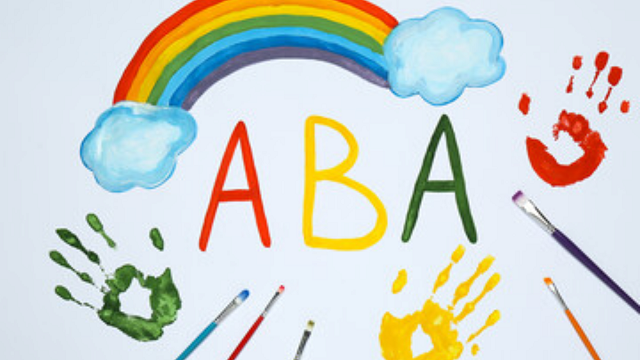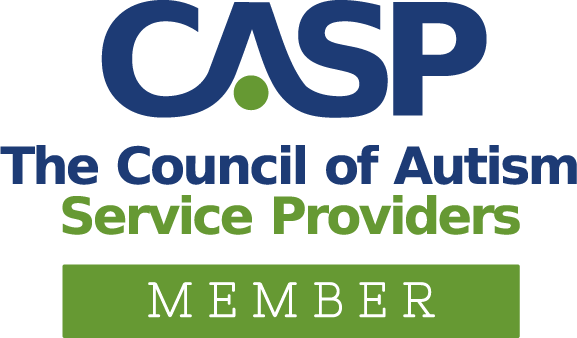Research and data going back more than five decades clearly show the many positive effects of ABA therapy on autism. In fact, Applied Behavior Analysis (ABA) therapy is the only evidence-based treatment for Autism Spectrum Disorder (ASD) and often the only therapy recognized and supported by health insurance.
Having a child newly diagnosed with autism can feel overwhelming as you consider treatment options. Autism is more common than many think, affecting 1 in 44 children in the United States. Research suggests that the sooner you seek out treatment, the better the outcome for your autistic child or loved one.
While no cure exists for autism, studies show that early intervention (from 18 months to 5 years old) and consistency are critical to long-lasting success in learning skills and building a sense of independence.
What Is Autism?
Autism Spectrum Disorder, commonly referred to as autism, affects a person’s developmental processes, mostly involving behavior and communication. Autism refers to an expansive range of conditions characterized by challenges with repetitive behaviors, social skills, speech, and nonverbal communication. Individuals on the spectrum typically struggle in these areas, and symptoms can make daily living difficult.
Experts recognize that there is no one type of autism, and the condition has many subtypes, most typically influenced by a combination of environmental factors and genetics. Because autism is a spectrum disorder, each person diagnosed with autism has a specific set of challenges and strengths. As autism expert Dr. Stephen Shore said, “If you’ve met one individual with autism, you’ve met one individual with autism.”
How people with autism think, learn, and solve problems ranges from highly skilled to severely challenged. Some individuals with autism require substantial support to complete daily living skills, while others need less assistance. In some cases of high functioning autism, individuals live entirely independently.
Autism is often accompanied by medical conditions such as gastrointestinal disorders, seizures, sleep disorders, and sensory sensitivities (reactions to sight, sound, taste, smell, touch, and pain). Additionally, mental health disorders such as depression, anxiety, and attention issues are not uncommon in autistic people.
What Are the Signs of Autism?
The signs of autism most commonly appear by age two or three. However, some associated development delays occur earlier and can be diagnosed as early as 18 months.
Some signs of autism include:
- Not responding to name
- Avoiding eye contact
- Not smiling or returning a smile
- Extreme dislike of specific tastes, smells, or sounds
- Repetitive movements (flapping hands, flicking fingers. or rocking)
- Limited or no verbal communication
- Repeating the same phrases
What Is ABA Therapy?
Applied Behavior Analysis, also known as ABA, is an evidence-based treatment based on the science of behavior and learning. ABA helps to understand the function of behavior, how environmental variables influence behavior, and how learning occurs in the brain. ABA therapy applies our understanding of the function of behavior to real-life situations to develop growth opportunities. The primary goal of ABA is to increase helpful behaviors while decreasing harmful behaviors that could affect learning. Services are most optimally delivered during or before the elementary years to ensure lasting changes.
ABA therapy helps clients:
- Develop attention, memory, focus, social skills, and academics
- Increase communication and language skills
- Decrease behaviors that affect learning
- Improve coping skills and language skills
Methods implemented by behavior analysts have been studied and used for decades. These treatments have aided many different kinds of learners acquire the skills necessary to live healthier lifestyles and flourish. Therapists have used ABA to help individuals with autism and other developmental disorders since the 1960s, although the practice of ABA today differs significantly from its beginnings.
What Are the Positive Effects of ABA Therapy?
There are countless positive effects of ABA therapy for families and autistic children. It empowers the child receiving the service to pursue interests and acquire skills. Parents are instilled with an understanding of behavior so that they can create stimulating and fun learning opportunities.
1. ABA therapy is individualized
For a child with autism, specialists must deliver treatments on a tailored, individualized basis. Every session should be different because every child is unique in how they process the world. ABA therapy for autism is provided by Board Certified Behavior Analysts (BCBAs) and Registered Behavior Technicians (RBTs). These certified professionals will go above and beyond to make your child’s strengths and interests part of the therapeutic experience.
2. ABA treatment is highly effective
Backed by scientific research and endorsed by the US Surgeon General and the American Psychological Association, ABA therapy is the most effective treatment available for autism. Many children can function in a classroom setting when ABA skills are taught in early development. Early intervention is imperative because, with intensive care, the child benefits from the academic environment and many other areas of their lives. Through ABA therapy, children with autism are given the tools they need to thrive in their daily lives. Additionally, parents are equipped with the skills needed to guide their children through life’s challenges.
3. ABA therapy empowers parents and helps them understand the function of their child’s behaviors
Parenting a child on the spectrum has many unique challenges. Parents must view an autistic child through an entirely different lens than a neurotypical child. ABA therapy helps parents understand their child’s perception of the world and why they behave in certain ways. Lastly, it ensures that parents are prepared and well equipped to guide their children through their developmental milestones.
4. ABA promotes the development of early functioning skills
One of the most positive effects of ABA therapy is that it helps the child with functioning skills in their early development. Studies have shown that early intervention with ABA therapy (e.g., children 18 months to five years old) provides the most significant benefits in the long run. For many autistic children, the processes learned through ABA therapy become second nature and lead to further progress in later life. Others with autism need consistent guidance and repetition for daily living skills, which can also be an aspect of your ABA therapy.
ABA can be helpful for early childhood development through:
- Potty training
- Dressing
- Refining fine motor skills
- Increase communication
- Learning play interactions
These are just a few imperative skills your child will learn to foster success and independence.
5. ABA can help your child foster healthy relationships
Some people are under the misconception that children with autism do not want to communicate, but this isn’t true. In most cases, children on the spectrum find it more challenging to make friends. They may struggle to understand sharing or fail to pick up on social cues. These challenges can interfere with connecting with peers.
With the positive effects of ABA therapy, children will learn skills necessary to create lasting relationships. They learn how to correspond, work in a group setting, and develop appropriate play skills. An effective ABA program encourages group activities that foster learning, making it an excellent environment for meeting other children and cultivating relationships.
6. ABA teaches independence
An RBT will teach your child the skills they need to lead independent and joyful lives, which is the overall goal of parenting! ABA therapy enables a child to become independent in specific areas of their lives. It introduces and teaches skills designed to be maintained across environments (school, home, community, etc.). Examples of skills learned through ABA include going to the bathroom independently or being able to sleep throughout the night. RBTs accomplish these goals by collecting data to be analyzed. A BCBA will later create a behavior plan based on this evidence to promote lasting change. By recognizing behavior patterns, they increase desirable behaviors. The ultimate goal is independence in as many areas as possible.
7. ABA readies a child for real-world challenges
All children grow up, and the behaviors they exhibit in youth, if not addressed, will be the same behaviors they exhibit as adults. The most efficient ABA services will help you and your child prepare to interact with the real world. Many of the skills taught in ABA therapy to children are still helpful in their adult lives.
When first confronted with an autism diagnosis, it may be challenging for you to imagine your child graduating high school, getting a job, or cultivating a romantic relationship. However, with the positive effects of ABA therapy, autistic children learn skills and techniques that will help them successfully navigate the world as an adult.
ABA Therapy at ABA Centers of America
Applied Behavior Analysis therapy helps people with autism and their families find success in their developmental journeys. ABA Centers of America is at the forefront of the autism treatment field. If your child has been diagnosed with autism or even if you suspect autism and want to learn more about how we can help, call us at 844-923-4222. Or message us about a free, no-obligation consultation.







